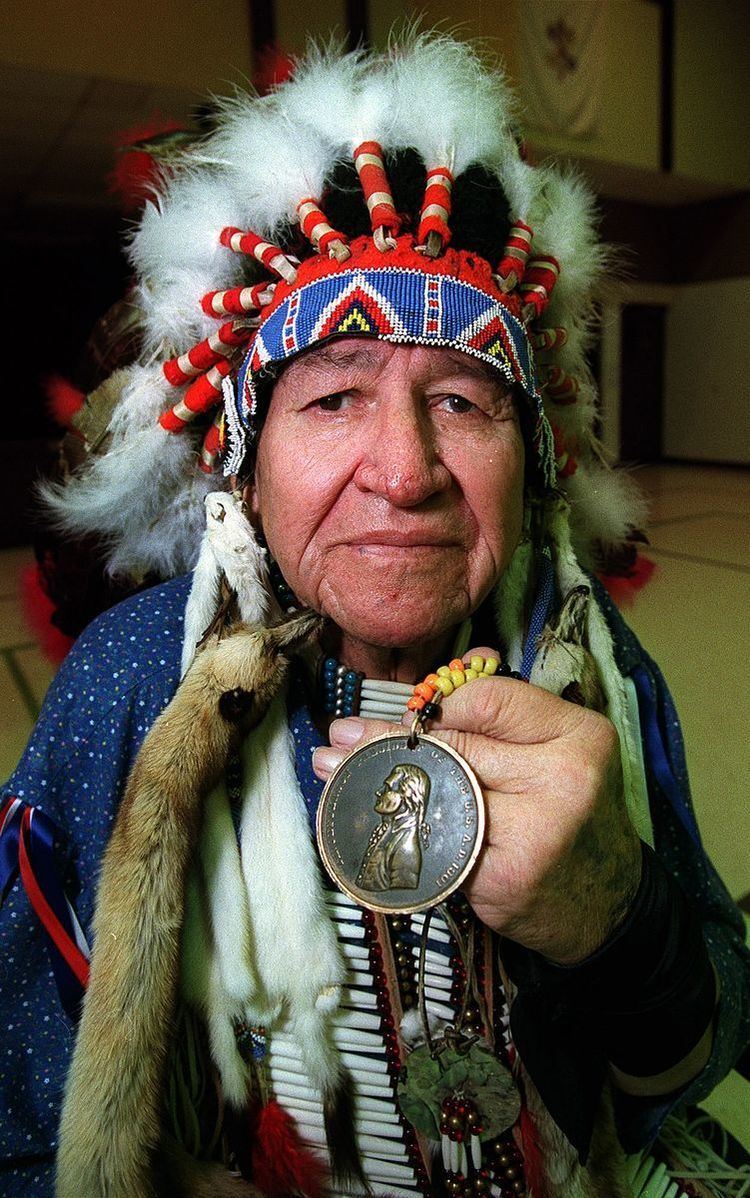 | ||
The term Indian Peace Medal is most commonly associated with circular, or oval, silver medallions distributed to Native American tribal representatives by representatives of the United States government. They were made in three sizes: small, medium and large. The largest could have a diameter of inches. The most common feature of Indian Peace Medals was the portrait of the current U.S. president. They are often cited as a symbol of the relationships between the United States federal government and Native Americans in the late-18th and 19th centuries. Indian Peace Medals were minted until the term of President Benjamin Harrison ended in 1893.
Following the practice established by European powers in the American colonies, U.S. presidents and their agents gave these medals to the chiefs or significant warriors of Native American tribes as tokens of friendship, sometimes accompanied by explanations of newly established U.S. sovereignty. The best known examples were the medals carried by Lewis and Clark on their 1804-1806 expedition to explore the Louisiana Purchase, many of which were Jefferson medals according to their journals. The medals would be given to Indian leaders throughout the expedition. Those were made of silver, of three different sizes. They were the first American Indian peace medals to be struck as opposed to engraved, but they were struck on two thin sheets of silver and held together by an outer band. Prior to James Madison's time, the obverse and reverse were separate silver sheets. The exact origin of Indian Peace Medal distribution is obscure. "Indian Peace Medals" were often typically accompanied by a token of a flag of the colonial power conducting diplomatic negotiations with the tribe.
From 1801 onwards, the reverse of an Indian Peace Medal depicted clasped hands and a crossed tomahawk and ceremonial pipe. It also included the phrase Peace and Friendship. The left wrist was covered with the ornamented cuff of a military uniform; the right wrist was bare, except in the case of Jefferson's medal, which covered the wrist with a broad metallic bracelet with the image of an eagle on it. The Jefferson design is also the basis for the reverse design of some 2004 nickels.
In many cases, because the medals were distributed to significant members of tribal parties, the medals became sought after symbols of power and influence within Native American tribes. While most of the medals were not distributed with holes in them, Native Americans would often perforate the medals themselves so to be worn around the neck. Indian peace medals are commonly seen in Native American portraiture. Once the medals became sought after by Native Americans during the period of European colonization of the Americas, many private corporations commissioned their own medals, often featuring the president of the corporation on the face of the medal, which was to be given out by their representative. The practice of distributing medals to Native American became so commonplace at one point that government representatives reported that it was difficult to engage in diplomatic relations without them.
The production of a majority of the American medals took place at the United States Mint in Philadelphia, PA. As the relations between the United States government and American Indian tribes changed and a large number of unofficial medals flooded reservations, the significance of the medals declined.
The United States Mint produces bronze replicas of some peace medals as part of its presidential medal series.
